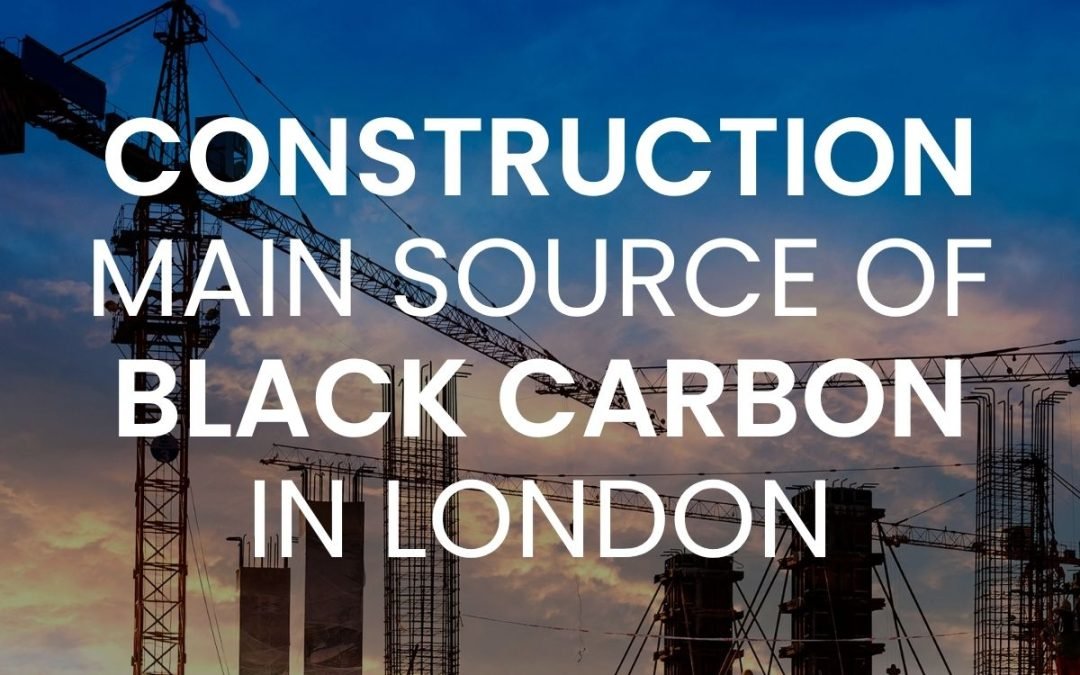Like many industries, the construction industry has faced many challenges during the pandemic and is now having to find solutions to become more sustainable. Several regulations including the mandatory climate disclosure mean that construction organisations need to be monitoring and acting on pollution now. But to achieve the ambitious net-zero target, organisations will need to be effectively reducing pollution in a targeted approach and ramping up their efforts on sustainability. The issue is especially acute for the construction industry as it uses a lot of natural resources and makes up 36% of worldwide energy usage and 40% of CO2 emissions, according to the International Energy Agency (IEA).
This increasing pressure with the introduction of new regulations, clean air zones and ambition targets means that things need to be done at pace. Monitoring pollution is key but acting on these issues is now just as important to meeting these net-zero goals.
What does it mean to be sustainable?
Sustainability can be perceived in many different ways as our article entitled “what 50 leading organisations think about sustainability” demonstrates. Ultimately the terms net-zero and SDGs (Sustainable Development Goals) are used to define the targets that companies want to achieve which is offsetting their carbon footprint and waste completely.
For the construction industry, this means that there needs to be materials that can be completely recyclable, and all elements of the supply chain working to minimise energy consumption and waste. By maximising recyclable and renewable energy, the industry can make a positive impact on the environment to minimise its impact on the climate.
Making construction sustainable not only means creating buildings from eco-friendly solutions but also ensuring that those buildings have a reduced impact on the environment over a long period of time. This article “reducing air pollution through building designs” expands on how the supply chain, placement of buildings, materials and the overall supply chain logistics can all play a part in how much pollution is created during a construction project. This is why a pollution monitoring tool can help to pinpoint these issues and help organisations to understand what elements of a construction process can be a cause for concern.
How can construction companies reduce pollution and be more sustainable?
Of course, there are multiple ways and methods that construction companies can introduce to reduce the impact of pollution on the environment. Of which construction companies are already implementing. However, to understand the wider impact that each activity has on pollution, organisations to need to have a monitoring tool that can not only track all activity but alert stakeholders to crucial issues.
Measuring the impact of the entire supply chain from transportation, to the production of materials, to the emission from materials or individual employees is fundamental. It’s important to be aware of the accurate representation of how much pollution each construction project is causing to understand the impact and how you can minimise pollution risks.
The development of using renewable energy in construction projects is progressing and as shown by this report by AZO on the construction sector in different countries certain places are advancing quicker than others. Investing in different powered energy sources such as solar, wind, hydroelectric and geothermal is allowing the industry to focus on natural powered sources rather than fossil fuels (pollutants). Although the initial investments into renewable energy are costly, the long-term benefits are high both environmentally and financially speaking.
Renewable energy is important for not just manufacturing but for designing buildings that are energy efficient and designed with the environment in mind to prevent wasted materials. An example of a solution is a modular battery system that can be used on construction sites to power transportation, tools and equipment with solar power recharging the battery itself. According to Microgrid News it can “offset one ton of CO2 per week and 400 litres of diesel”.
Investing and planning out greener solutions is not plain sailing but overcoming the challenges of cost, time and sourcing can help to reach even greater benefits. The pressure of staying compliant means construction businesses will feel the need to invest in green solutions sooner. However, although there are very evident benefits are such as ensuring an eco-friendlier environment to local communities, there are other rewarding benefits such as a demand for more greener buildings with higher value. The World GBC ‘suggesting up to 7% increase in value compared with traditional buildings’. The combination of lower energy costs in the long run, higher value construction and positive CSR means the medium to long-term benefits are there to be seen.
Learn more about how you effectively identify your pollution risks in your construction projects and monitor your improvements on pollution overtime with a digital tool like EMSOL. Book a demo with our friendly team here and we can help you stay compliant and improve your pollution reductions in your communities.





